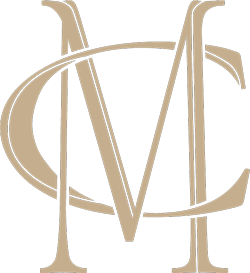Revision rhinoplasty refers to an individual’s second (or third) nose job. You may undergo a revision rhinoplasty for numerous reasons, such as correcting the primary rhinoplasty’s undesired cosmetic results, fixing functional complications arising from the primary rhinoplasty, or simply enhancing the results of the procedure. You must select highly-skilled plastic surgeons for your revision rhinoplasty because it’s a fairly complex procedure.
Revision Rhinoplasty
What is Revision Rhinoplasty?
Revision rhinoplasty is generally more complex than primary rhinoplasty because the surgeon must address the primary procedure’s flaws, deal with scar tissues, or use cartilage grafts from other parts of the body to fix issues arising from excessive cartilage trimming. This procedure can correct the complications arising from your primary rhinoplasty and deliver a more aesthetic and attractive nose that conforms to your facial anatomy.
Reasons for a Revision Rhinoplasty:
- You are unhappy with the cosmetic results of your primary rhinoplasty
- You want to correct additional cosmetic issues, such as a residual hump or nasal tip
- Your nose didn’t heal properly after your primary nose job
- You have breathing problems and other complications
- You have excess scar tissues in your nose from your primary procedure
- Your nose looks “overdone”
- Your primary rhinoplasty results have been compromised by an injury
Candidates for Revision Rhinoplasty:
- Want to correct the cosmetic and functional flaws of a primary rhinoplasty
- Want to improve the overall shape, size, or structure of the nose
- Have breathing problems or functional obstruction
- Are in good physical and mental health
- Have realistic expectations from the procedure
- Are nonsmokers or willing to stop smoking before and after the procedure
- Can take around two weeks off work and other responsibilities to recover
Dr. Chiodo’s Revision Rhinoplasty Technique
Dr. Chiodo performs a highly personalized revision rhinoplasty after a thorough evaluation. He carefully examines your nose, discusses your goals, reviews your medical history, studies the results of the primary rhinoplasty, and determines if you have any functional complications. After a thorough assessment, he determines if you need an open rhinoplasty or closed rhinoplasty. Closed rhinoplasty involves making an incision inside the nose, and open rhinoplasty involves an incision on the strip of tissue separating your nostrils.
Your rhinoplasty surgery is performed under general anesthesia in our cutting-edge operating rooms. Depending on the degree of shaping and contouring necessary, Dr. Chiodo makes an incision inside or outside the nose. If your primary rhinoplasty has chiseled away excessive tissues, Dr. Chiodo may need to draw cartilage grafts from your septum, ear, or rib to rebuild your nasal structure. The specific details of the rhinoplasty vary from one individual to the next.
Recovery After Revision Rhinoplasty
After revision rhinoplasty, you will experience some redness, swelling, tenderness, numbness, and bruising on your nose for a week or two, following which the side effects subside. You will need to wear a nasal splint for a week, and your nose might be packed to reduce bleeding. You must keep your head elevated for the first few days to ensure optimal recovery. You can resume most of your daily activities and work after a week, but avoid strenuous workouts for 6 weeks.

Schedule an Appointment
Dr. Michael Chiodo is a plastic and reconstructive surgeon specializing in rhinoplasty surgeries. When looking for a rhinoplasty surgeon, you must not settle for anything less than a fellowship-trained plastic surgeon. Dr. Chiodo completed his facial cosmetic surgery fellowship at the Dallas Plastic Surgery Institute, widely considered one of the country’s best fellowship programs. Furthermore, Dr. Chiodo ensures you feel emotionally supported through every stage of your surgical process. Please schedule an appointment to explore your revision rhinoplasty options in Dallas.
